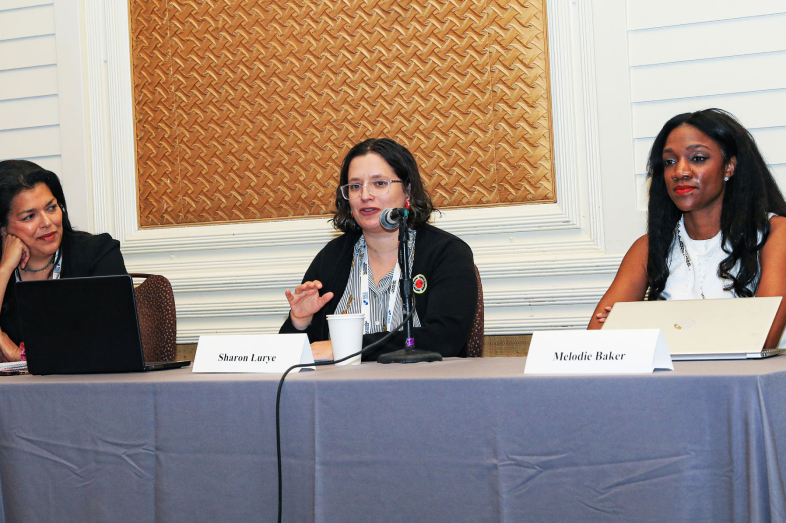
Factoring Math Into Education Equity Coverage
Learn about societal and systemic issues that are keeping students from advancing in math and embracing the subject from an early age.
Photo credit: James Minichello of AASA for EWA

Learn about societal and systemic issues that are keeping students from advancing in math and embracing the subject from an early age.
Photo credit: James Minichello of AASA for EWA
Math test scores plummeted during the COVID-19 pandemic, leaving parents and educators scrambling to catch kids up. Three panelists discussed how journalists can cover the math recovery story and provided a tip sheet during the Education Writers Association’s 2024 National Seminar in Las Vegas last May.
Spencer Education Fellow Joe Hong moderated the panel, which included an expert and two journalists:
At an early age, a student might decide they are or are not a math person, a decision not common for other subjects. Unlike with reading, society normalizes someone saying: “I’m not a math person.” The way a student is taught math influences if they like it or not. Sometimes, educators who aren’t confident in teaching math can pass that sentiment on to their students.
“There’s no such thing as a math person,” Sharon Lurye said. It’s all about if someone has a growth mindset. If they do, they can become good at math by working hard. It is a very American thing to have a phobia of math. Other countries, Lurye said, don’t share this fear of being bad at math.
“I’ve seen whole families do that: We’re just not good at math,” Napolitano said. “Telling the kids — we are bad at this; this is not a space for us, which is something you really carry with you for life.”
Most Black and Latino students are tracked into lower-level math classes than their white and Asian peers. How students are tracked varies, but it’s most often based on test scores, grades and teacher recommendations, which may be biased.
Melodie Baker grew up always enrolled in lower-level math classes. It was hard to get onto a more challenging math track, and the lower-level math classes left her with a negative perception of her abilities.
Often, students need to be advanced by seventh or eighth grade to do calculus by the end of high school, and a lot of colleges don’t accept students without calculus, Baker said. Parents sometimes don’t know they have to go out of their way to advocate for their children to be in advanced math.
Calculus is a status symbol, Baker said. “It says to college admissions that this is a top-tier student. Why? Because not everybody has access to this math,” Baker said.
Napolitano said some colleges are now starting to relax their grip on using calculus as a gatekeeper. Baker and Napolitano both noted that colleges should prioritize students learning statistics and data science instead.
There’s much conversation about preparing children for reading by having many books in the house and reading to children before bed. There’s less conversation about doing the same for instilling a love of math.
It doesn’t have to be complicated, Lurye stressed. At the grocery store, point out that there are two eggs and two broccoli. Ask them: What is a number? And what does it mean for something to be bigger or smaller or less or more of something?
To get students more engaged in math, teachers should ask students about a problem in the community and brainstorm about how to use math to solve it. COVID deaths, homelessness or literacy issues are some examples.
It’s important to interrogate what personalization really means, Lurye pointed out.
“Personalization is when the student is really choosing the topic for themselves, and it’s something they really care about,” Lurye said. It shouldn’t be like Mad Libs, where some random terms a student likes are subbed into a word problem.
Your post will be on the website shortly.
We will get back to you shortly